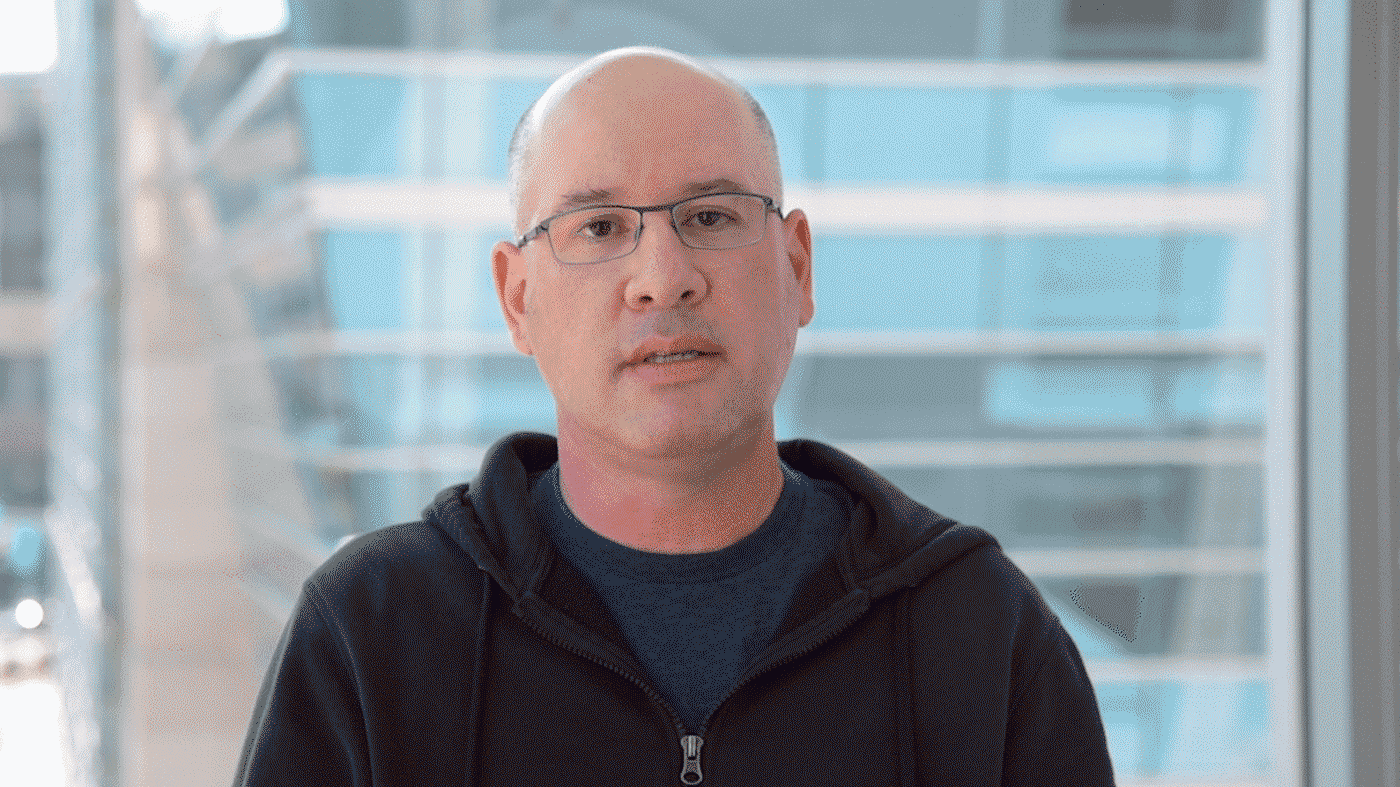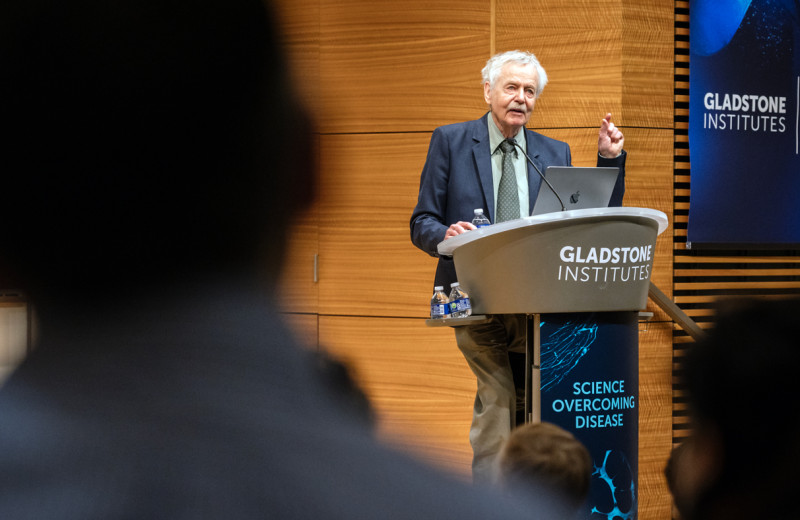Gladstone NOW: The Campaign Join Us on the Journey✕

A lifelong admirer of the natural world, Jason Neidleman studied biochemistry and molecular biology at UC Santa Barbara before joining Gladstone as a research scientist.
For the last 20 years, Jason Neidleman (he/him) has been working on HIV research at Gladstone—first in the laboratory of Warner Greene and now in the laboratory of Nadia Roan. In 2020, Neidleman pivoted his HIV research to study COVID-19.
What brought you to Gladstone?
I had heard that the work at Gladstone was at the forefront of HIV research. I was previously working in industry, but I thought it’d be a great learning experience to join an academic lab—the opportunity to join Warner Greene’s lab was available and I was delighted to join Gladstone!
What do you like about Gladstone?
I feel fortunate to work at Gladstone—the research is of the highest quality and, of course, I enjoy interacting with my colleagues! It’s good to be in a culture where well-informed researchers challenge each other’s assumptions.
Were you interested in science as a child?
Yes, although when I was younger, I would describe it more as an interest in nature. I enjoyed seeking out fossils in local parks (there are lots of shells at Briones Regional Park), growing colorful slime molds sampled from my hands and face on petri dishes, and playing with my chemistry set. My early chemistry experiences helped make me a better researcher today. For instance, I learned a good lesson when I ignited some homemade gunpowder on my desk: don’t do that.
Can you describe your current research project?
My project in the Roan Lab aims to better understand the HIV latent reservoir in T cells. Antiretroviral therapy, which suppresses viral production, has been extremely successful at making HIV infection a manageable disease. However, if treatment is interrupted, the viral load typically increases again and can weaken the immune system. This rebound of the virus is caused by infected T cells that persist even in the context of treatment. We call these persisting cells the “latent reservoir.” The consequence is that people living with HIV need to suppress the virus in these cells indefinitely with drugs. If these infected cells could be eradicated permanently, antiretroviral therapy would no longer be needed.
However, T cells are very diverse, so we’re actively investigating which T cells harbor the reservoir. We use a technology called CyTOF that helps solve this problem because it has a high capacity to distinguish between the many types of T cells by measuring a high number of cellular features at once. Using this approach, we’re increasing our understanding of latent reservoirs—how they persist, and how to target them for eradication as a strategy to cure HIV.
When the pandemic hit, we decided to pivot our ongoing HIV studies to better understand T cell responses during COVID-19. We rapidly adapted our CyTOF approach to analyze T cell features and functions during mild, moderate, or severe disease. This has revealed some interesting insights into the beneficial role of T cells in the fight against COVID-19.
More recently, we looked at T cell responses in the context of vaccination. We found that vaccination induces robust T cell responses to SARS-CoV-2 variants, and that the quality of the response differs depending on whether the vaccinated individuals were previously infected with SARS-CoV-2.
How has the pandemic changed your work?
Previously, my projects were entirely focused on HIV, but during the pandemic, we also undertook several SARS-CoV-2 projects. It has been an exciting and intense year of research. It’s amazing how quickly clinical and research labs were able to pivot to a new virus, and it has been satisfying to be a part of the effort.
August is National Immunization Awareness Month. What do you want people to know about the COVID-19 vaccine?
We know that the vaccine provides the best protection available against severe illness. Even if you’ve been previously infected with COVID-19, you are much less likely to have severe symptoms when you boost your immunity by vaccination. The more people get vaccinated, the better we can reduce the chances that additional variants—like Delta—will appear.
What or who influenced your decision to work in science?
My dad was a scientist and he certainly was a major influence. As I was growing up, there were lots of scientific books around and one of my favorites was the Scientific American compilation called The Living Cell, which had a big electron microscopy photo of a cell’s nucleus on the cover. I’ve always been amazed at how such small structures are so well organized.
What do you do when you are not working?
My wife and two children keep me busy (and happy)! We’ve been hugging all kinds of trees from the foggy northern Redwoods to way down south in Joshua tree. We just look at the cacti, though.
If you could learn to do anything, what would it be?
I love tools and wood, but I haven’t yet learned how to join the two into beautiful woodwork. I have some visions of furniture I’d like to make, so this could be a great hobby in the future.
What is your hidden or unique talent?
It isn’t unique, but I’m sometimes hidden under the hood of my car tinkering around. My car is fairly new, so there isn’t much to do yet, but I’ll be ready when the time comes!
If you could meet any scientist from any point in time, who would it be and why?
Although he was not strictly a scientist, I think a few sessions with Socrates would straighten me out.
I also wonder, whenever I go to a museum, what unknown genius, woman or man, figured out how to take a lump of obsidian and shape it by a complex process into a cutting stone or arrowhead? Who figured out how to take a lump of iron ore and purify it, mix it into an even better alloy, and form it into vessels and tools? Their identity is a scientific mystery—but if we ever found out, I’d love to meet them.
Want to Join the Team?
Our people are our most important asset. We offer a wide array of career opportunities both in our administrative offices and in our labs.
Explore CareersA Sculptor of Modern Regenerative Medicine
A Sculptor of Modern Regenerative Medicine
Among his myriad accomplishments, Rudolf Jaenisch—winner of the 2025 Ogawa-Yamanaka Stem Cell Prize—was the first to demonstrate the potential of induced pluripotent stem cells to treat disease.
Awards Ogawa Stem Cell Prize Profile Regenerative Medicine Stem Cells/iPSCsMeet Gladstone: Shijie Wang
Meet Gladstone: Shijie Wang
Shijie Wang, a postdoctoral scholar in Steve Finkbeiner’s lab, uses artificial intelligence, robotics, and stem cell technologies to uncover how brain cells die in neurodegenerative diseases like Alzheimer’s and Parkinson’s.
Profile Neurological Disease Finkbeiner Lab AI Robotic MicroscopyMeet Gladstone: Oscar Yip
Meet Gladstone: Oscar Yip
Oscar Yip is advancing Alzheimer’s research in Yadong Huang’s lab at Gladstone while drawing inspiration from his family, community, and his broader goal of helping patients.
Graduate Students and Postdocs Profile Alzheimer’s Disease



